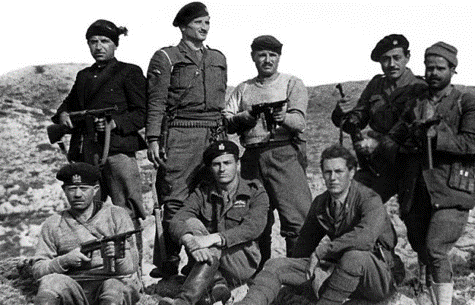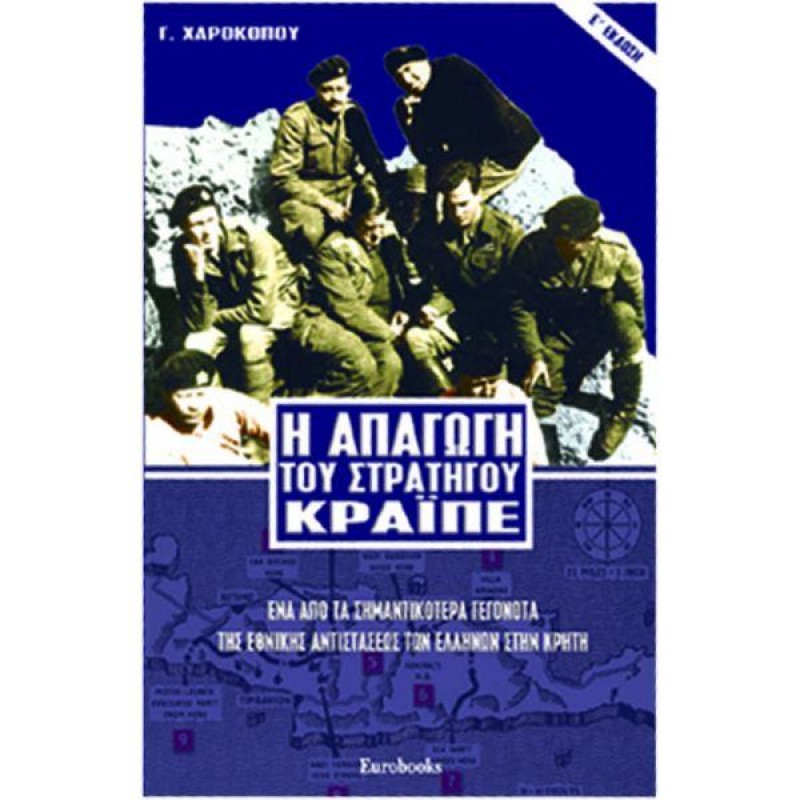
Participation in all struggles
The inhabitants took part in many fights and occasionally in a leading role.
During the Turkish occupation, the presence of the conquerors was not strong, due to the stony ground, but also because it was a stronghold of fighters.
From the first years of the Revolution of 1821, the inhabitants took part in many battles.
On February 9, 1822, a deadly battle took place in Fourfouras, resulting in the death of 300 Turks led by Tsilivotampasi and 50 Cretans.
Later, in a new battle at Aspes, the Turks left many dead and the Christians 9. In these battles, the chief of Fourfouras, George Simantiras, took part and several fighters such as Manolis Kostakis, Pantelis Diamantidis, Manolis Sarris, Manos and others.
In 1834 the village is inhabited by 40 Christian families and 6 Turkish ones.
In 1881 it belonged to the Municipality of Monastiraki with 420 Christians, while the Turks left Fourfouras in 1897, but returned a little later to sell the lands they owned.
In 1920 it is the seat of a homonymous rural municipality with 597 inhabitants, while from 1928-1998 it is a separate community, having the most inhabitants 718 in 1940.
29 residents in favor of homeland
But the Fourfourian struggles continued from the Balkan wars and the Asia Minor catastrophe with 14 sacrificed and 14 others in World War II and the Civil War.
Several inhabitants fought on the side of the English, against the Germans, in fact George M. Tyrakis belonged to the group for the abduction of General Kraipe.
During the occupation there was a German outpost in the village with German and Italian soldiers and with commander Zimblix, who seems to have been a good Christian since he went regularly and prayed to the Virgin Mary.
He participated in the festivities of the village and created the central square, perhaps this was the reason why the village did not suffer losses for the abduction of Kraipe, like other villages.
Fighters during the Turkish occupation
Giorgis Andredakis (1859-1933): Distinguished doctor of the poor and forerunner of penicillin, according to Fleming. First prefect of Amari, member and vice-president of the Cretan Parliament in 1896, as well as a representative of the Post-Government Committee.
He took part in the siege of Vamos and the battle of Genna, where he forced the Turks in exchange to release the prisoners in Rethymno.
Works of "Historical Notes" of 1926 and "Memoirs" of 1932.
Pantelis G. Diamantidis (1838-1929): He took part in the demonstrations against Otto in 1862 in Athens and later took refuge in Central Asia.
In 1866, as chief, he fought outside Arkadi, while he also took part in the battles: Vrysina, Maroula, Margarites, Kallikrati, etc. In 1879 he was elected first mayor of Panakraion, based in Monastiraki.
Manolis Kostakis: Chief who managed to find out the plans of the Turks for the occupation of Amari, arresting their all-armed messenger near M. Asomaton.
The next day, the Turkish attacks began, looting the first villages, but Kostakis and a young man took a timely position and fired incessantly at the vanguard, killing several Turks. The rest of the army, fearing that there was a lot of resistance, abandoned its plan.
Manolis Sarris: Chief of 1866, who handed over the command to Diamantidis.
George Simantiras: Chief of 1821, who took part in several battles and was killed in Monofatsi.
Costas N. Psimikos: He was in Syros with other Cretans, with a sailboat they started in 1866 to support the Revolution. In Souda, however, they were captured by the Turks and taken to prisons in Istanbul. After two years with the intervention of the Russian consulate in Rethymno, he was released and returned to Crete, taking part in battles after 1869.

Ο ΜΑΘΙΟΥΣ ΚΑΙ ΟΙ ΨΕΙΡΕΣ! Είχε αφηγηθεί ο Μιχάλης Μ. Μαθιουδάκης: «Στο Λενάκι τη Σιγανού, απάντρευτη τότε, θα ‘τανε 25 χρονώ’ , τρέχανε οι Εγγλέζοι και ο Τομ Νταμπάμπιν περισσότερο. Μπαίνανε εύκολα στο σπίτι, ευτυχώς δε το προδώκανε.
Ήτανε έξω στα χωράφια οι Εγγλέζοι, στο-γ-«Κούμο» και τρέχανε οι γυναίκες ότι ‘θελα ‘χει η καθεμιά, ψωμί, και τσι βρίσκανε.
Στ’ αόρι είναι μια-ν-τρύπα στο «Γέρο Πεύκο» μέσα-μέσα, κι ήτονε και ‘κεια πέρα οι Εγγλέζοι. Επήγα με το Βασίλη το Μουρτζανό κι ήτονε οι Εγγλέζοι και τρέχανε οι ψείρες απάνω-ν-τωνε. Ήτανε τρείς κι είχανε το-ν-ασύρματο ‘κει κι έπαιρνε ένας το σταμνί κι έτρεχε απ’ τη-ν «Όχρα» και το γέμιζενε.
Ούλοι οι χωριανοί τσ’ αγαπούσανε τσ’ Εγγλέζους! Εμπαίνανε οι Εγγλέζοι χωστά στο χωριό και τρέχανε στση Σιγανού το σπίτι!»
Ο Γιώργης Τυράκης στη δική του εξιστόρηση αναφέρεται σε περιστατικό με τον ασυρματιστή Μάθιους: «Είχαμενε στου «Μαθιού το Χάρακα» στον Ψηλορείτη, ασυρματιστής τότεδά ήταν ο Μάθιους.
Αυτός τότε του άρεσε ν’ αναθρέφει τσι ψείρες. Ήταν κι αυτός ένας τρόπος να περνά την ώρα του. Καθόταν, λοιπόν, στον ήλιο πολλές φορές, ψειριζότανε, έβανε το χέρι-ν-του κάτω στη μασχάλην του να τραβά τις ψείρες, τώρα έξω, ε; Άμα ‘ταν καμιά μεγάλη τη σκότωνε. Άμα ‘ταν καμιά μικρή λέει: «Όχι, αυτή ν’ ακόμα μικρή! Τοο little! Τη γύριζε πίσω, να μεγαλώσει κι αυτή και να τη σκοτώσει όντε θα ‘ναι καιρός τσης…».



